new posts in all blogs
Viewing: Blog Posts Tagged with: Real Estate, Most Recent at Top [Help]
Results 1 - 16 of 16
How to use this Page
You are viewing the most recent posts tagged with the words: Real Estate in the JacketFlap blog reader. What is a tag? Think of a tag as a keyword or category label. Tags can both help you find posts on JacketFlap.com as well as provide an easy way for you to "remember" and classify posts for later recall. Try adding a tag yourself by clicking "Add a tag" below a post's header. Scroll down through the list of Recent Posts in the left column and click on a post title that sounds interesting. You can view all posts from a specific blog by clicking the Blog name in the right column, or you can click a 'More Posts from this Blog' link in any individual post.

By: Emily Kaplan,
on 9/28/2016
Blog:
OUPblog
(
Login to Add to MyJacketFlap)
JacketFlap tags:
Books,
New York City,
skyline,
affordable housing,
skyscrapers,
Rent,
real estate,
economic history,
Social Sciences,
*Featured,
Business & Economics,
house prices,
Bill de Blasio,
housing market,
Building the Skyline,
Floor Area Ratio,
jason m. barr,
rent stabilization,
The Birth and Growth of Manhattan’s Skyscrapers,
zoning law,
Add a tag
New York City is the midst of a housing affordability crisis. Over the last decade, average rents have climbed 15% while the income of renters has increased only 2%. The city’s renaissance since the 1990's has drawn thousands of new residents; today, the population of 8.5 million people is the highest it has ever been. But New Yorkers are finding that the benefits of city living are not without its costs. The demand for housing has outstripped the real estate community’s ability to supply it; as a result, prices have been rising.
The post New York City’s housing crisis appeared first on OUPblog.
He's not inviting you to his mansion anytime soon, but at least we've got this video tour.
The post Look Inside Ed Catmull’s New $10 Million San Francisco Mansion appeared first on Cartoon Brew.
DreamWorks has finally found a viable business model: selling its studio campus over and over again.
The bank that bought the campus just a few weeks ago is attempting to flip the property for a $65 million profit.
Disney Animation and Pixar president Ed Catmull is listing one of his compounds in Kailua, Hawaii, just two years after building it.
It may not pay to be an artist on "The Simpsons," but it definitely pays if you're a voice actor on the show.

By:
Nina Wright,
on 2/22/2013
Blog:
Nina Wright
(
Login to Add to MyJacketFlap)
JacketFlap tags:
Michigan,
death,
Wall Street Journal,
real estate,
cozy series,
abra the afghan hound,
michigan realtor,
dog mysteries,
michigan mystery,
Magnet Springs,
Add a tag
When Sanette Tanaka, Wall Street Journal real estate reporter, arranged a phone interview with me two weeks ago, I wasn’t sure what to expect.
What I experienced during our half-hour chat was a professional journalist asking tough questions but also laughing about my humorous mysteries set in fictional Magnet Springs, Michigan, starring Abra the (untrainable) Afghan hound and, of course, Realtor Whiskey Mattimoe.
 Ms. Tanaka was intrigued by my choice of a Realtor as a mystery series protagonist. I explained that a real estate agent has access to properties and people in widely varied conditions. Setting my Whiskey Mattimoe mysteries in a resort town lets me create colorful characters drawn to a charming and expensive setting. If a character isn’t acting out while on holiday, he or she is probably making a living from those who are.
Ms. Tanaka was intrigued by my choice of a Realtor as a mystery series protagonist. I explained that a real estate agent has access to properties and people in widely varied conditions. Setting my Whiskey Mattimoe mysteries in a resort town lets me create colorful characters drawn to a charming and expensive setting. If a character isn’t acting out while on holiday, he or she is probably making a living from those who are.Humor is at the heart of my series and at the core of many real estate issues. As I told Ms. Tanaka, “When you have a lot of money and a lot of emotion involved in a time-sensitive transaction, things tend to go wrong. Looking for comedy in chaos is what I do.”
Of course, Abra the Afghan hound helps things go wrong, but almost as often she helps solve the mystery, too. Abra is surprisingly heroic in Whiskey and Soda (Book #6). And she’ll play an unexpectedly vital role in the seventh Whiskey Mattimoe mystery due out later this year.
Nina Wright, author of six mystery novels featuring real-estate agent and sleuth Whiskey Mattimoe, says she often embellishes absurd situations to suit her series. In real life, Ms. Wright, who lives in Oakland County, Mich., found out that one of her tenants was running an underground day-care service. In the fourth book, "Whiskey and Water," agent Mattimoe discovers that her tenant is operating an illegal adoption ring.
"There are so many things that can go wrong in real estate," says Ms. Wright. "I've bought and sold a lot of properties, but I haven't seen a single transaction where there aren't colossal screw-ups."
(If you're curious about the article, email me. Be sure to write WSJ in the subject line. I welcome all emails from my readers. Without you there is no series.)

By: Kirsty,
on 2/18/2013
Blog:
OUPblog
(
Login to Add to MyJacketFlap)
JacketFlap tags:
restud,
the review of economic studies,
ethnic housing quotes,
ethnic preferences,
maisy wong,
malays,
tampines,
Economics,
Current Affairs,
Geography,
Singapore,
Asia,
ethnic,
real estate,
housing,
preferences,
Editor's Picks,
*Featured,
quotas,
Business & Economics,
oxford journals,
desegregation,
Add a tag
By Maisy Wong
There are many policies around the world designed to encourage ethnic desegregation in housing markets. In Chicago, the Gautreaux Project (the predecessor of the Moving To Opportunity program) offered rent subsidies to African American residents of public housing who wanted to move to desegregated areas. Germany, the United Kingdom, and Netherlands, impose strict restrictions on where refugee immigrants can settle. Many countries also have “integration maintenance programs” or “neighborhood stabilization programs” to encourage desegregation. These policies are often controversial as they are alleged to favor some ethnic groups at the expense of others. Regardless of the motivation behind these policies, knowing the welfare effects is important because these desegregation policies affect the location choices of many individuals.
 I am interested in one such desegregation policy in Singapore: the ethnic housing quotas. Using location choices, I analyzed how heterogeneous households sort into neighborhoods as the ethnic proportions in the neighborhood change. To do this at such a local level I had to assemble a dataset of ethnic proportions by hand-matching more than 500,000 names to ethnicities using the Singapore residential phonebook.
I am interested in one such desegregation policy in Singapore: the ethnic housing quotas. Using location choices, I analyzed how heterogeneous households sort into neighborhoods as the ethnic proportions in the neighborhood change. To do this at such a local level I had to assemble a dataset of ethnic proportions by hand-matching more than 500,000 names to ethnicities using the Singapore residential phonebook.
The ethnic housing quotas policy in Singapore is a fascinating natural experiment. It was implemented in public housing estates in 1989 to encourage residential desegregation amongst the three major ethnic groups in Singapore: Chinese (77%), Malays (14%), and Indians (8%). The quotas are upper limits on the proportions of Chinese, Malays, and Indians at a location. Locations with ethnic proportions that are at or above the quota limits are subjected to restrictions designed to prevent these locations from becoming more segregated. For example, non-Chinese sellers living in Chinese-constrained locations are not allowed to sell to Chinese buyers because this transaction increases the Chinese proportion and makes the location more segregated.
Using transactions data close to the quota limits and controlling for polynomials of ethnic proportions calculated using the phonebook, I documented price dispersion across ethnic groups that is consistent with theoretical predictions of the policy’s impact. The findings suggest a model where Chinese and non-Chinese buyers have different preferences for Chinese neighborhoods.
Indeed, my estimates show that all groups have strong preferences for living with members of their own ethnic group but the shapes of the preferences are very different across the three ethnic groups. All groups have ethnic preferences that are inverted U-shaped but with different turning points. This means that once a neighborhood has enough members of their own ethnic group, households want new neighbors from other ethnic groups. Finding tastes for diversity and differences in the shapes of ethnic preferences is consistent with previous research using data on racial attitudes from the General Social Survey in the United States and also surveys of ethnic relations in Singapore.
I used these estimates of ethnic preferences to perform welfare simulations. The seminal work by Thomas Schelling on tipping showed that externalities exist in a model with ethnic preferences because a mover affects the utility of his current and future neighbors by changing the ethnic composition of the neighborhood. Due to these externalities, Schelling showed that policies such as the ethnic quotas could potentially be used as a coordination mechanism to achieve equilibrium with integrated neighborhoods. My welfare estimates show that under the quota policy, about one-third of neighborhoods are close to the optimal allocation of Chinese, Malays, and Indians respectively.
Maisy Wong is Assistant Professor in Real Estate at Wharton, University of Pennsylvania. Her paper, ‘Estimating Ethnic Preferences Using Ethnic Housing Quotas in Singapore’ can be read in full and for free in The Review of Economic Studies.
The Review of Economic Studies aims to encourage research in theoretical and applied economics, especially by young economists. It is widely recognised as one of the core top-five economics journal, with a reputation for publishing path-breaking papers, and is essential reading for economists.
Subscribe to the OUPblog via email or RSS.
Subscribe to only business and economics articles on the OUPblog via email or RSS.
Image credit: HDB flats at Tampines New Town. By Terence Ong. [Creative Commons], via Wikimedia Commons.
The post Do people tend to live within their own ethnic groups? appeared first on OUPblog.


By: J.R.Poulter,
on 10/7/2012
Blog:
Publishing a Picture Book - Getting it all together
(
Login to Add to MyJacketFlap)
JacketFlap tags:
Flickr,
research,
Facebook,
YouTube,
setting,
databases,
real estate,
Google Earth,
state library,
Pinterest,
photographic collections,
history,
Add a tag
"Researching the story's environment"
By happy accident, I discovered the way to travel interstate, overseas, inter-culturally and explore the ambience of remote towns, cities, country lanes and outback outposts. Air tickets - well that's the ideal, but no, I used Google Earth.
It started with trying to locate a lovely country home in West Hougham, Kent, England by using aerial satellite and 'street view'. It was featured in Country Life for September 7th, 2000, and was the

- Inspiration for "The Dolls' House in the Forest"
inspiration for my story "The Dolls' House in the Forest".
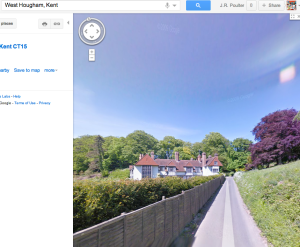
- West Hougham, Kent, country road, travelled via Google Maps street view.
I didn't find the house, but I had the most wonderfully inspiring time wandering down country lanes that were little more than wagon tracks, great boughs canopying overhead and wildflowers dotted in the fields...
Now, if I need to capture something of the 'feel' of an area. I seek out an address. Then in I go.
Exploring the
Realtor advertisements in the research area gives insight into the lifestyle and inhabitants of the town. Many homes give
a slideshow or even a video tour online.
Visualising Story
Other ways to 'get in the setting' for free include
YouTube clips. This is even a Youtube video clip on
West Hougham, Kent. Sadly, it doesn't feature that house...
Other ways to 'get in the setting' for free include Flickr, photographic collections held in State Libraries and on places like Pinterest. For historical setting, try online Heritage listings and databases for Australia and UK.
An example of other useful research sites for historic buildings in Australia -
International settings - the virtual tour
Aside from a drop in to street level via Google Earth, many online sites feature virtual tours of historic settings, buildings, rambles around towns, cities and country areas. A few examples -
Castles -
International Cities
Whatever the historic building or the town, you are quite likely to find a youtube clip or at least flicker photos, then there is always Google Earth! Have fun!
FULL ARTICLE
http://jrpoulter.wordpress.com/2012/05/20/researching-the-environment-of-story/
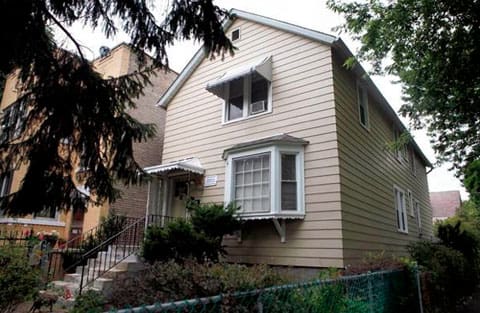
Walt Disney’s first home – his family’s house on Tripp Ave. in Chicago – is for sale. This is where Walt spent the first four years of his life, before the family moved to Marceline, Missouri. Walt’s father built the house himself.
It’s been up for sale for several years and there are no takers. According to this story in today’s L. A. Times, preservationists are concerned it’ll be torn down as it lacks historic landmark designation. Situated in a predominantly Latino neighborhood, a city councilmen there (quoted in the article) considers Disney a racist. “Walt Disney was a bigot, and I’m not going to sit here on a panel and create a historical landmark for a bigot.” I hope someone at the Disney Studio will consider purchasing the place; the $179,000 asking price is probably less than the cost of craft services on the next Iron Man movie.
Cartoon Brew |
Permalink |
3 comments |
Post tags: Real Estate, Walt Disney
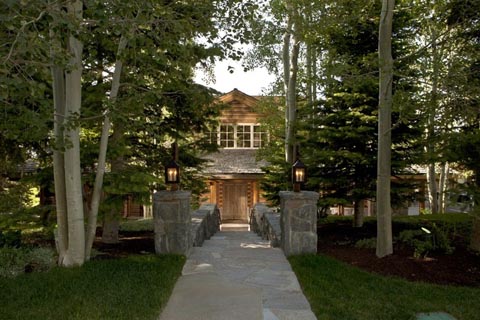
Jeffrey Katzenberg makes his second appearance in our Lifestyles of Animation Executives column. Unlike his Beverly Hills mansion that he built on a $35 million plot of land, this relatively modest ski-in, ski-out lodge in Deer Valley, Utah cost a mere $10 million to build. The 14,000-square-foot space includes six bedrooms, gym, stone fireplace, ski-prep room with boot warmers built into the walls, an indoor pool and hot tub, a wood sauna and a billiard room. It also includes a 75-inch 3-D-enabled Samsung television that Katzenberg flew in from Korea.
The home was built twenty years ago but has been continually updated. Its interior floor plan was designed by architect Charles Gwathmey in consultation with architect Rick Otto. “[My wife] Marilyn wanted to create a place where we could be a family and not have social obligations infringe on that time,” Katzenberg explained to the Wall Street Journal. “We designed the house to be the perfect family trap. When we vacation at the house, we literally eat breakfast, lunch and dinner together.”
Guests at the home have included Bill Clinton, Al Gore, Michael Jackson, reality-TV producer Mark Burnett, Tom Cruise and Cameron Diaz. The Wall Street Journal offers more photos and a video tour of the property, which you may as well watch since it’s unlikely that Jeffrey will be extending invites to Cartoon Brew readers anytime soon. But seriously, Mr. K, if you’re ever lonely and need a ski buddy, don’t hesitate to get in touch. I’ll even eat dinner with you, though breakfast and lunch seems a tad excessive.

(Photos by Chad Hurst of the Wall Street Journal)
Cartoon Brew |
Permalink |
2 comments |
Post tags: dreamworks, Jeffrey Katzenberg, Lifestyles of Animation Executives, Real Estate
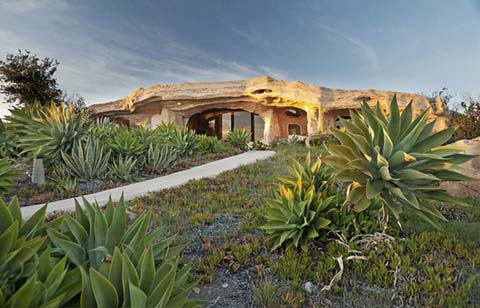
File this one under “Things I Did Not Know About Dick Clark.” Apparently, he owns a one-bedroom Flintstones-inspired home in Malibu, and the LA Times reports that he’s selling it for $3.5 million, though the asking price doesn’t reflect the value of the home so much as it does the 23-acre plot of land it sits on. If you’re curious, here’s the full home tour in all its stone-age goodness.

(via Laughing Squid)
Cartoon Brew |
Permalink |
No comment |
Post tags: Dick Clark, Hanna Barbera, Real Estate, The Flintstones

Add the home of Peanuts creator Charles Schulz to the list of famous animator and cartoonist homes that have popped up on the real estate market recently. The 7,894-square-foot, 6-bedroom home was built in 1949 and is situated on two acres in northern California’s Sonoma County.
According to AOL Real Estate, Schulz purchased the home for $250,000 in 1973 from the Roman Catholic Diocese of Santa Rosa. Schulz and his wife Jeannie sold the home in 1996. The second owner listed the place way back in November 2009, and the price has now dropped from $2.9 million to $2.275 million. From the photos, which you can VIEW HERE, the place appears to be in need of an overhaul.
The home has a nice stained-glass window in a “chapel” room, which the real estate people suggest can be removed and replaced with a big-screen TV. They’ve even created a mock-up of what this new den of Godless debauchery could look like:

More photos of the home after the jump:

(Thanks, Carl Russo)
Cartoon Brew: Leading the Animation Conversation |
Permalink |
No comment |
Post tags: Charles Schulz, Peanuts, Real Estate

Sheila Barbera, the wife of the late Hanna-Barbera co-founder Joe Barbera, has listed their Studio City estate for $6.795 million dollars. According to the LA Times, Mrs. Barbera “will be making her primary residence at her Old Las Palmas estate in Palm Springs.”
The 2-acre property has a 6,900 square foot feet home with 4 bedrooms, staff quarters, and a floor-to-ceiling stone fireplace in the living room. There’s also a 7,200 square feet car garage, lighted tennis court, pool and spa. The home was built in 1988 so it’s not the site of any real animation history, unless you’re an admirer of A Pup Named Scooby-Doo and Jetsons: The Movie.
The home is listed by Karen Misraje of Partners Trust, Beverly Hills. Here’s the ALL-CAPS listing from her site:
ONE ENTERS THIS GATED ESTATE ALONG A WINDING DRIVEWAY TO A LARGE MOTOR COURT WITH A GRANDE PORTE-CO-CHERE. THIS TRADITION CLASSIC, COMMISSIONED IN 1988, IS A GATED BYRD DESIGN ESTATE AND IS SITUATED ON APPROXIMATELY 2 ACRES IN FRYMAN CANYON. THE ESTATE RESONATES SERENITY AND A COMFORTABLE FAMILY LIFESTYLE. IF OFFERS A CENTER ENTRY WITH A POWDER ROOM, A LIVING ROOM WITH FLOOR TO CEILING STONE FIREPLACE AND ACCESS TO AN OUTSIDE TERRACE WITH TREE TOP CANYON VIEWS. THE FORMAL DINING ROOM SEATS 10 GUESTS COMFORTABLY TO A MAXIMUN OF 16 GUESTS. THE GRACIOUS FAMILY ROOM/DEN HAS A FULL BAR, A FLOOR TO CEILING STONE FIREPLACE AND BEAUTIFULLY DESIGN LEADED GLASS WINDOW. THE MASTER SUITE IS ON THE MAIN FLOOR WITH A MASTER BATH AND A HUGE MASTER CLOSET. THE MASTER SUITE HAS VIEWS TO COLORFUL FOILAGE AND MATURE TREES. THE KITCHEN OFFERS A SUBZERO REFRIGERATOR AND FREEZER, A VIKING COOKTOP, BUILT-IN OVENS, CENTER ISLAND WITH SINK, WARMING DRAWERS AND A TRASH COMPACTOR WITH OVERVIEWS TO A PARK-LIKE SETTING. IN THE MAIN RESIDENCE THERE ARE 3 ADDITIONAL FAMILY BEDROOM SUITES, 1 STAFF SUITE, A LARGE LAUNDRY ROOM AND 2 STAIRCASES. A “GENTLEMAN’S” CAR GARAGE OFFERS 7200 SQ. FEET OF SPACE. THE SPACE IN THE GARAGE HAS ROOM FOR A NUMBER OF AUTOMOBILES, A PRIVATE GENTLEMAN’S OFFICE OR PLAYROOM, AN ADMISTRATIVE OFFICE, A STORAGE ROOM WITH A ROLL-UP DOOR AND A BATH. THERE IS A OUTSIDE ENTERTAINMENT PATIO ADJACENT THE POOL AND SPA. THIS ESTATE ALSO HAS A SECLUDED CHAMPIONSHIP LIGHTED TENNIS COURT AND ITS OWN COMMERCIAL GENARATOR. SHOWN BY APPOINTMENT ONLY!
Cartoon Brew: Leading the Animation Conversation |
Permalink |
No comment |
Post tags: Hanna Barbera, Joe Barbera, Real Estate
So in my last post, I noted that there’s always some flaw you overlook when you’re shopping for a house.
Here, in my beautiful stone cottage by the falls, it’s stumps.
Yes. Stumps.
Every place I want to plant something, there’s a stump in the way. There’s the pine tree that got blasted by lightning at the rear of the yard. There’s the remains of the taxus hedge that lined the walkway. There’s the arborvitae and bayberry stumps along the driveway. There’s a stump in the middle of the circular bed where the summer bulbs are to go.
And there’s the massive stump under the rose garden.
Well, it isn’t a rose garden, yet. And may never be.
The bed is sandwiched between the driveway, the patio, and the house. Though the dirt was rich and black, it was a nearly vacant canvas, ready for my gardener’s touch. I blessed the previous owners, who must have brought in a load of topsoil to create this lovely raised bed.
I imagined myself on some future summer morning, sitting on the patio, enjoying the fragrance and color from my adjacent rose garden, miraculously free of blackspot and Japanese beetles.
I’m a writer. I have a very good imagination.
So one morning I spread compost over the top of the bed and dug in.
Thunk! My shovel struck wood about six inches below the dirt. I moved six inches to the right. Thunk! A foot to the left. Thunk! I dug down far enough to see reddish wood.
I consulted my neighbor, who’d lived next door to the house for decades.
“There was a tree there,” she said. “It was a beautiful tree, with lovely pink flowers. A cherry tree, I believe. Don’t know why they cut it down.”
I went to call the tree man.
He looked the situation over. “Do you have to take it out?” he said, with the wisdom of experience. “Can’t you just plant over it?”
I imagined years of thunking into wood.
“No,” I said. “I want it out.”
He promised to return the next week to chip it out, but asked that we expose the entire stump in the meantime.
Expose the stump? Sure thing. That’s the easy part, right?
After a long day of digging up beds and planting perennials, I returned to the rose bed and began to dig. Thunk! Thunk! Thunk! In a wider and wider circle.
I piled dirt on the edges of my growing ho
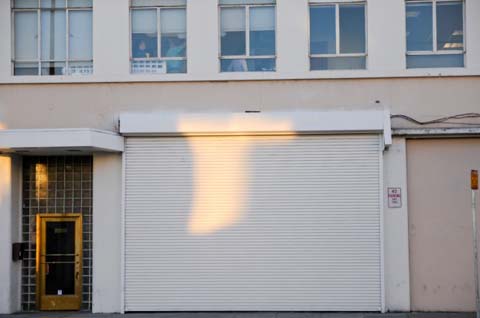
Henry Selick’s new animation studio, which we reported on a couple months ago, has set up shop in San Francisco’s hip Mission District. According to MissionLocal.org, the Disney-backed studio, now called ShadeMaker Productions, is located in a former chocolate factory at 16th and Folsom, and will ultimately house 150 employees.
Cartoon Brew: Leading the Animation Conversation |
Permalink |
3 comments |
Post tags: Cinderbiter, Henry Selick, Real Estate

















Just happened across this and hope to see more!